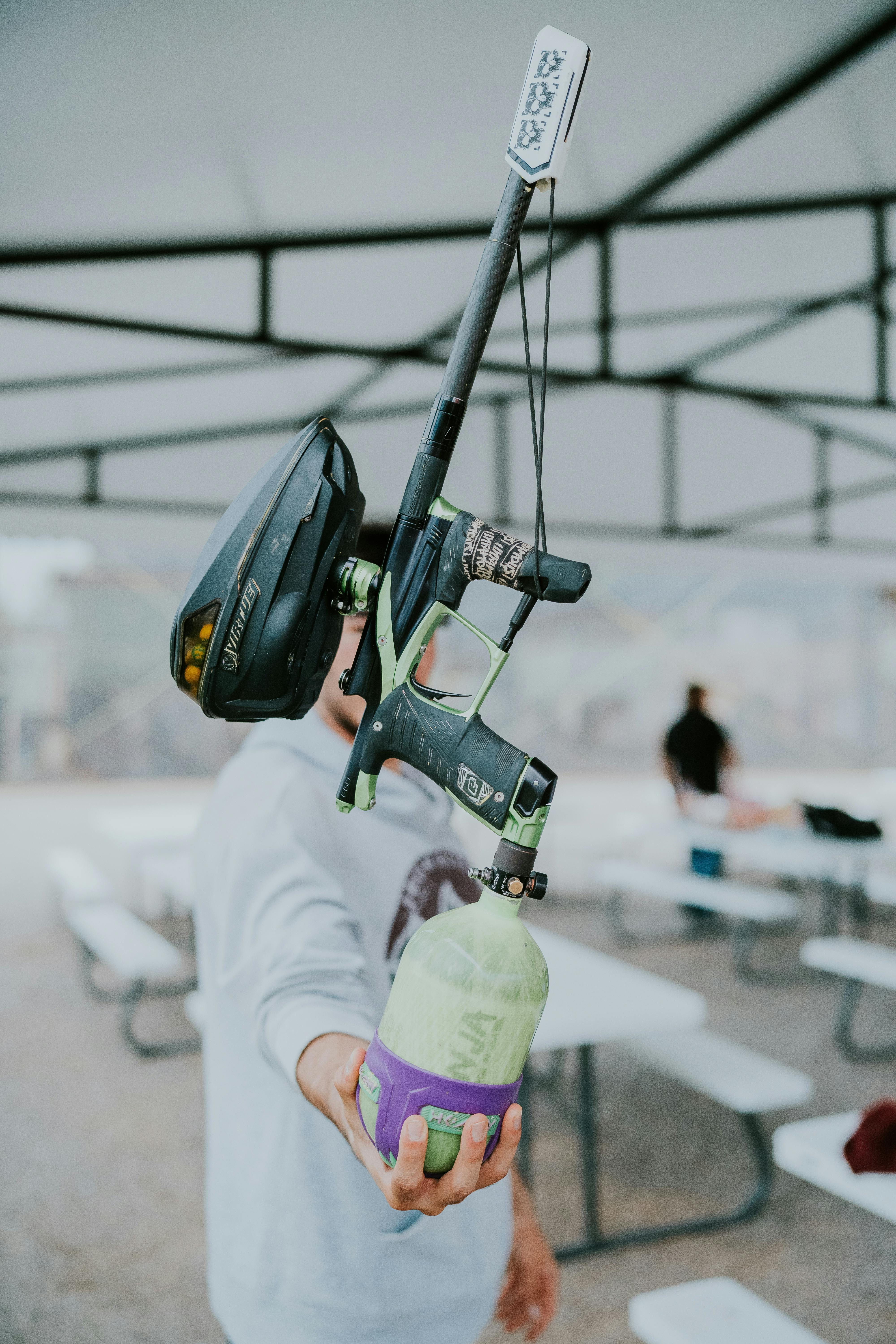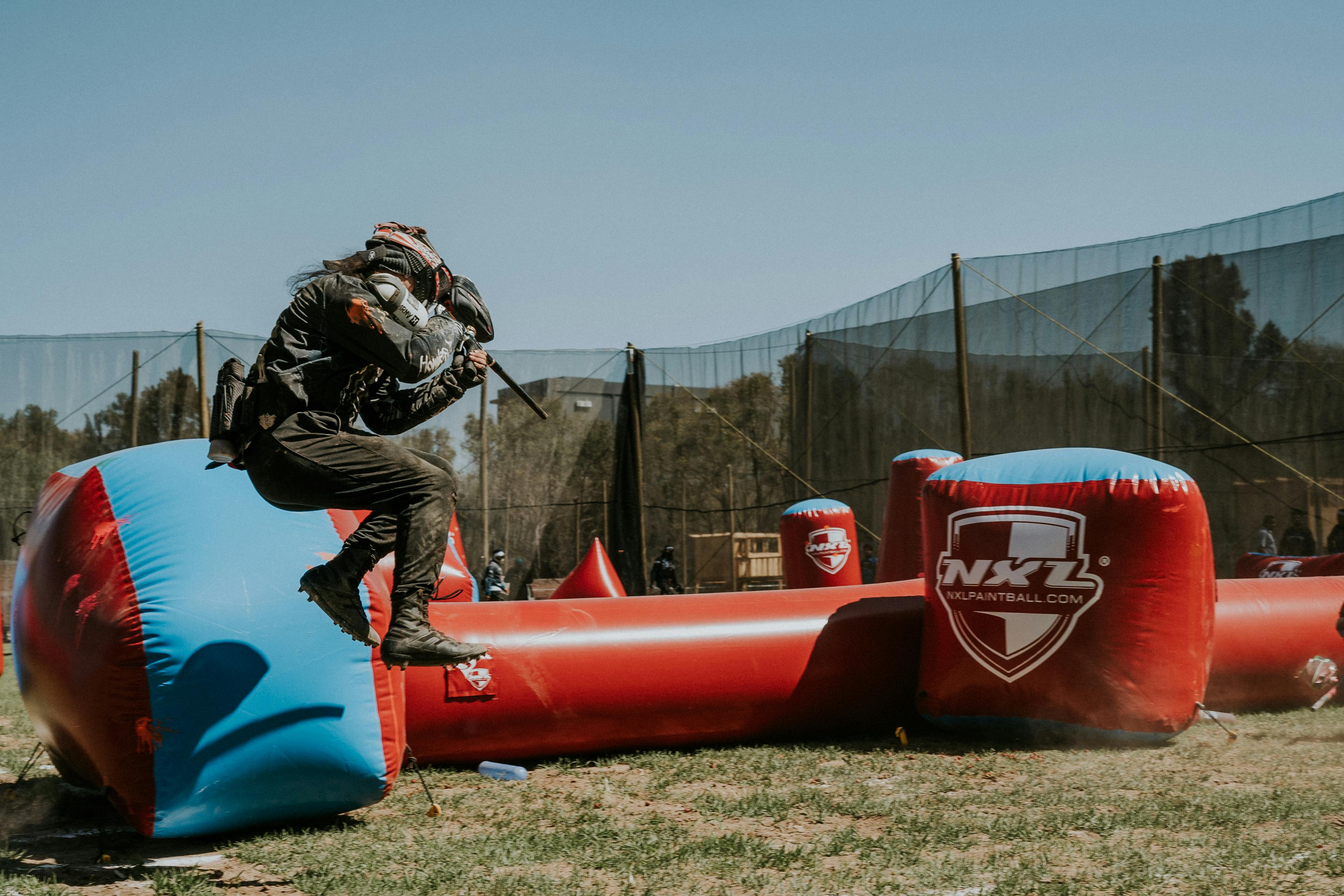2025 Paintball Vision 7 Biometric Breakthroughs in Prescription Eyewear Tactics
The first time I realized my vision was sabotaging my paintball career wasn’t during a tournament. It was while coaching a 14-year-old named Mia, who kept tripping over a tree root hidden beneath autumn leaves. Her goggles fogged so badly she looked like she’d walked into a sauna. “I’m done,” she muttered, yanking off her mask. “My glasses turn every game into a bad horror movie.” I knew that feeling—the humiliation of being the liability, the dread of fogged lenses mid-firefight. But what I didn’t know then was how biometric eyewear would rewrite the rules for players like us.
The Fog of War (Literally)
Paintball isn’t just about shooting. It’s about seeing. The split-second difference between spotting a muzzle flash through smoke and walking into an ambush. Yet for years, prescription wearers have faced a cruel joke: Want protection? Sacrifice clarity. Want clarity? Risk shattering glass near your eyes. I learned this the hard way during the 2021 Pacific Rim Championships. My decade-old prescription glasses, crammed beneath standard-issue goggles, fogged up during a critical push. I missed a flanking maneuver, got tagged out, and sprained my ankle retreating over terrain I couldn’t properly judge. My teammate Jamal summed it up: “You played that match like a mole rat with a death wish.”
Traditional solutions failed us. Contact lenses? Try sprinting through dust clouds with dry eyes. Thermal lenses? They’re about as effective as a screen door on a submarine if your prescription isn’t calibrated to them. And don’t get me started on “universal” inserts that require MacGyver-level modifications to fit masks like the Empire E-Flex or JT Proflex.

The Biometric Shift: Why Your Mask Deserves Smarter Optics
Last Thursday, I watched a rookie player test prototype inserts at our training range. He’d borrowed a pair from our R&D lab—unmarked, sleek, with a faint amber tint. Halfway through a drill, he froze. “The lenses just…adjusted,” he said, bewildered. A cloud had passed overhead, shifting the light. His inserts had compensated faster than he could blink. That’s biometric integration: eyewear that adapts not just to your eyes, but to the chaos around them.
Breaking Down the Breakthroughs:
1. Reactive Tinting: Imagine lenses that darken/lighten based on ambient light intensity—no more squinting into sunlit kill zones or getting blinded by sudden flares.
2. HUD-Free Targeting: Overlays are distracting. True biometric optics sharpen natural sightlines using micro-contrast enhancements, highlighting movement without cluttering your view.
3. Fog Resistance That Actually Works: Traditional anti-fog coatings wear off. Our inserts use passive airflow channels + hydrophobic nano-textures to repel moisture without chemicals.

“But Will These Fit My $16K Mask Setup?”
A valid fear. I’ve seen players spend years (and paychecks) perfecting their gear. When Carlos, a veteran JT Proflex loyalist, first tried our inserts, he brought his mask to my workshop like it was a bomb squad package. “If I have to drill new vent holes, we’re done,” he warned. We didn’t. The universal interface clicked into his existing lens frame in under 10 seconds. His review? “Feels like cheating. But legal cheating.”
Compatibility Checklist:
- No Retrofit Nonsense: If your mask accepts dual-pane lenses (e.g., Vents V-Code), our inserts slot in natively.
- Adjustable Vertical Fit: Most competitors force you to choose between “nose bridge garrote” and “lenses kissing your eyebrows.” Our vertical sliders accommodate 94% of adult facial structures.
- Pressure-Free Sealing: Traditional glasses create gaps that fog exploits. Our frameless design hugs your goggles’ curvature, sealing out debris and humidity.

The Price of Clarity (Spoiler: It’s Not Your Kidney)
Mia’s mom cornered me after practice last month. “I’m not buying $500 tech for a hobby,” she said. I showed her our entry-level model. “$119.99. ANSI Z87.1 certified. Survived a .50 cal paintball at 500 fps during testing.” She blinked. “That’s…less than her last birthday phone.”
Cost Breakdown:
| Tier | Price Range | Best For | Key Feature |
|---|---|---|---|
| Recreational | $50–$129 | Casual/weekend players | Basic anti-fog, CR39 lenses |
| Pro-Performance | $130–$299 | Tournament competitors | Reactive tinting, 3D-molded frames |
| Elite Biometric | $300+ | MILSIM pros/coaches | Adaptive contrast, trauma-rated |
The Safety Paradox: “Advanced” Isn’t Synonymous with “Safe”
In 2023, a player in Ohio nearly lost an eye to a shattered insert from a discount brand. His mask passed inspection, but the polycarbonate lenses were thinner than a politician’s promises. Our inserts? 2.5mm CR39 lenses with edge hardening—tested against ASTM F2879 standards. Because biometrics shouldn’t mean brittle.

The Future Is Clear (And Fog-Free)
Two weeks ago, Mia won her first regional tournament. Post-match, she shoved her mask at me. “Check the lenses!” Pristine. No smudges, no fog, just the faintest shimmer from the anti-glare coating. “I saw everything,” she said. “Even the ref scratching his nose behind the bunker.” That’s the power of merging prescription precision with tactical IQ—a game where the only thing you’re blindsided by is your own potential.
Frequently Asked Questions
What is biometric eyewear, and how does it improve paintball gameplay?
Biometric eyewear integrates advanced technologies like reactive tinting, fog resistance, and adaptive contrast to optimize vision in real-time. This enables players to maintain clarity in varying light conditions and ensures uninterrupted performance on the field.
Do these smart inserts fit all paintball masks?
Yes, the inserts are designed to slot natively into dual-pane lens masks without any need for retrofitting. Adjustable vertical sliders and a frameless design ensure compatibility with most adult facial structures and eliminate common issues like pressure gaps.
How do these inserts prevent fogging?
The smart inserts use passive airflow channels combined with hydrophobic nano-textures. This ensures moisture is repelled without relying on traditional anti-fog chemicals, giving players long-term fog resistance.
Are these advanced lenses safe for use in high-impact environments?
Absolutely. The lenses are ANSI Z87.1-certified and tested against ASTM F2879 standards with 2.5mm CR39 material and edge hardening, making them highly durable and trauma-resistant, even in demanding conditions.
How much do biometric inserts cost?
Prices start at $119.99 for entry-level models. More advanced options like Pro-Performance and Elite Biometric tiers cater to different needs, ranging from $130 to $300+ based on features like reactive tinting and adaptive contrast.



Share:
2025 Military Simulation vs Speedball Paintball Eyewear Needs Compared
How Premium Paintball Goggle Inserts Save Long Term Costs By 2025